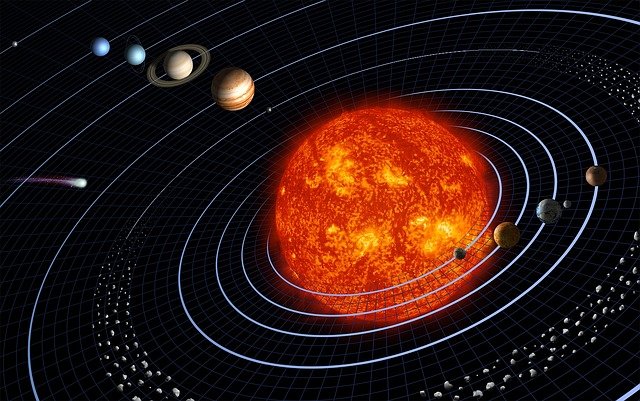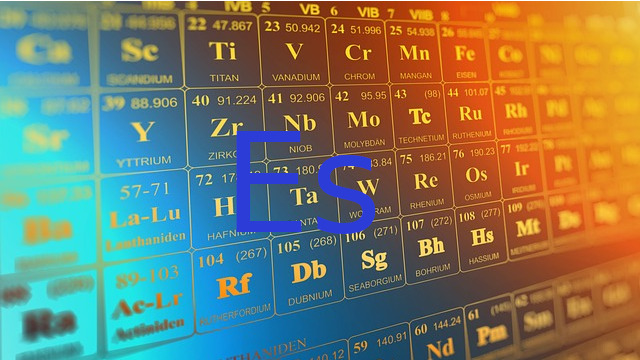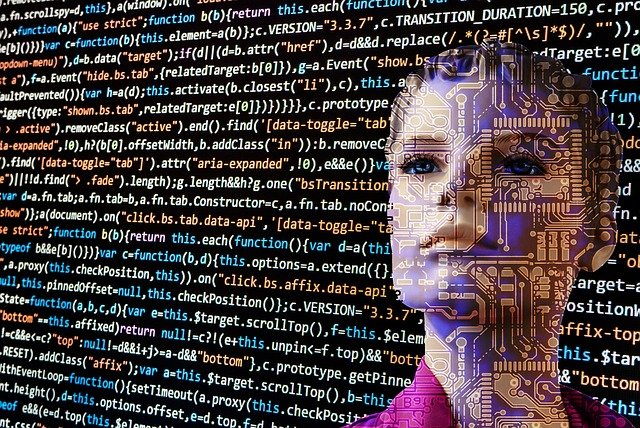External peer review of the RT-PCR test for the detection of SARS-CoV-2 reveals 10 essential scientific shortcomings on a molecular and methodological level: Consequences for false positive results.
 Dear reader, today we will start with a quote from Prof. Albert Einstein, (from a radio broadcast for United Jewish Appeal, April 11, 1943):
Dear reader, today we will start with a quote from Prof. Albert Einstein, (from a radio broadcast for United Jewish Appeal, April 11, 1943):
"The pursuit of truth and knowledge is one of the most beautiful things that a person is capable of, even if pride in this pursuit is mostly on the lips of those who are least filled with such pursuits."
The world has been with the for almost a year Corona pandemic employed. A great many measures have been taken to control the situation. We at the DTT Science-Tank Team have never addressed the subject of the corona pandemic. The reason is quite simple. In order to form a scientific opinion on a topic, you need a healthy and respectful dispute, especially in science. Good scientists have always done that. If you just look at the history of quantum physics and the various legendary feuds between scientists, you learn how science works. Unfortunately took place in the present Corona crisis Hardly tired of a proper dispute, until now.
It goes without saying that the basis for various measures by governments is the PCR tests represent.
The work published in early 2019: Detection of 2019 novel coronavirus (2019-nCoV) by real-time RT-PCR - to be found here (https://www.eurosurveillance.org/content/10.2807/1560-7917.ES.2020.25.3.2000045)
Authors:
Victor M Corman, Olfert Landt, Marco Kaiser, Richard Molenkamp4, Adam Meijer, Daniel KW Chu6, Tobias Bleicker1, Sebastian Brünink, Julia Schneider, Marie Luisa Schmidt1, Daphne GJC Mulders4, Bart L Haagmans, Bas van der Veer, Sharon van den Brink , Lisa Wijsman, Gabriel Goderski, Jean-Louis Romette, Joanna Ellis, Maria Zambon, Malik Peiris, Herman Goossens, Chantal Reusken, Marion PG Koopmans, Christian Drosten
is known. It was and is perhaps still considered the main trigger for the implementation of PCR tests.
Without going into the details of the work, we'd like to go into one Review report to draw attention:
Image source: Pixabay
External peer review of the RTPCR test to detect SARS-CoV-2 reveals 10 major scientific flaws at the molecular and methodological level: consequences for false positive results - to be found here (https://cormandrostenreview.com/report/)
Autoren:
Pieter Borger, Bobby Rajesh Malhotra, Michael Yeadon, Clare Crai, Kevin McKernan, Klaus Steger, Paul McSheehy, Lidiya Angelova, Fabio Franchi, Thomas Binder, Henrik Ullrich, Makoto Ohashi, Stefano Scoglio, Marjolein Doesburg-van Kleffens, Dorothea Gilbert, Rainer Klement, Ruth Schruefer, Berber W Pieksma, Jan Bonte, Bruno H Dalle Carbonare, Kevin P Corbett, Ulrike Kämmerer

 Researchers at the University of Massachusetts Amhers have figured out how to get objects through the Energy flow can set in motion in the environment. Your research could be useful for applications from toy making to the military industry. Wherever a drive source is required. They will also enable us in the future to learn more about how nature drives certain types of movement.
Researchers at the University of Massachusetts Amhers have figured out how to get objects through the Energy flow can set in motion in the environment. Your research could be useful for applications from toy making to the military industry. Wherever a drive source is required. They will also enable us in the future to learn more about how nature drives certain types of movement. According to research by a Swiss-Danish team of scientists, vehicles that will be sent to Uranus and Neptune in the next decade could be used to study Gravitational waves can be used. According to the scientists, the analysis of radio signals sent to Earth by vehicles in the outer regions of the solar system will make it possible to Space-time disturbances to analyze caused by gravitational waves.
According to research by a Swiss-Danish team of scientists, vehicles that will be sent to Uranus and Neptune in the next decade could be used to study Gravitational waves can be used. According to the scientists, the analysis of radio signals sent to Earth by vehicles in the outer regions of the solar system will make it possible to Space-time disturbances to analyze caused by gravitational waves. Apple has patches for three Zero-day vulnerabilities Released in the iPhone, iPad and Apple TV operating systems. Cyber criminals actively exploited vulnerabilities in iOS, iPadOS and tvOS. They have been patched with version 14.4 of all the systems mentioned.
Apple has patches for three Zero-day vulnerabilities Released in the iPhone, iPad and Apple TV operating systems. Cyber criminals actively exploited vulnerabilities in iOS, iPadOS and tvOS. They have been patched with version 14.4 of all the systems mentioned. According to a report by the World Health Organization (WHO), 15 million newborns are affected by spontaneous premature births every year. Up to a million of them die. Many face lifelong disabilities. The commonly used manual analysis of Ultrasound images allows detection of possible problems, but is not a perfect method. This problem is recognized by doctors. In 2017, Nicole Sochacki-Wójcicka (about to specialize in gynecology) and Jakub Wójcicki contacted Dr. Tomasz Trzciński from the Faculty of Electronics and Information Technology at the Warsaw University of Technology (WUT) and asked if it was possible to start a project to predict spontaneously Premature births using neural networks to realize. Then a research team was formed and work began. The first effects are already known. Our solution can support computer diagnostics and provide a more accurate prediction of spontaneous premature births, "explains Szymon Płotka, a graduate of the Warsaw University of Technology and one of the members of the team working on the project.
According to a report by the World Health Organization (WHO), 15 million newborns are affected by spontaneous premature births every year. Up to a million of them die. Many face lifelong disabilities. The commonly used manual analysis of Ultrasound images allows detection of possible problems, but is not a perfect method. This problem is recognized by doctors. In 2017, Nicole Sochacki-Wójcicka (about to specialize in gynecology) and Jakub Wójcicki contacted Dr. Tomasz Trzciński from the Faculty of Electronics and Information Technology at the Warsaw University of Technology (WUT) and asked if it was possible to start a project to predict spontaneously Premature births using neural networks to realize. Then a research team was formed and work began. The first effects are already known. Our solution can support computer diagnostics and provide a more accurate prediction of spontaneous premature births, "explains Szymon Płotka, a graduate of the Warsaw University of Technology and one of the members of the team working on the project. The Lawrence Berkeley National Laboratory (LBNL) succeeded in making the first measurements of the atomic bond length of einsteinium perform. This is one of the fundamental properties of the interaction of the element with other atoms and molecules. Even though einsteinium Discovered 70 years ago, not much is known about it. This is because the element is very difficult to obtain and highly radioactive.
The Lawrence Berkeley National Laboratory (LBNL) succeeded in making the first measurements of the atomic bond length of einsteinium perform. This is one of the fundamental properties of the interaction of the element with other atoms and molecules. Even though einsteinium Discovered 70 years ago, not much is known about it. This is because the element is very difficult to obtain and highly radioactive. Fatima Ebrahimi, Princeton physicist Plasma Physics Laboratory (PPPL), is the author of a new rocket propulsion concept that would enable astronauts to reach the outer planets of the solar system. Her idea is to use a magnetic field to accelerate plasma particles and use them to propel a spacecraft.
Fatima Ebrahimi, Princeton physicist Plasma Physics Laboratory (PPPL), is the author of a new rocket propulsion concept that would enable astronauts to reach the outer planets of the solar system. Her idea is to use a magnetic field to accelerate plasma particles and use them to propel a spacecraft. Before the era of the Apollo expeditions, researchers believed that the moon was an arid desert. All because of the extreme temperatures on its surface and the harsh space environment. However, much has changed since then, and scientists have confirmed the existence of water on the moon (
Before the era of the Apollo expeditions, researchers believed that the moon was an arid desert. All because of the extreme temperatures on its surface and the harsh space environment. However, much has changed since then, and scientists have confirmed the existence of water on the moon ( Researchers at the Korea Institute of Advanced Science and Technology (KAIST) have succeeded in reprogramming the behavior of laboratory rats via a smartphone app and thus, as the university press release says, "Real-time brain controlAnd because the implant can be remotely charged, laboratory animals and possibly human patients will not need surgery in the future to replace dead batteries or bulky external devices to power the implants.
Researchers at the Korea Institute of Advanced Science and Technology (KAIST) have succeeded in reprogramming the behavior of laboratory rats via a smartphone app and thus, as the university press release says, "Real-time brain controlAnd because the implant can be remotely charged, laboratory animals and possibly human patients will not need surgery in the future to replace dead batteries or bulky external devices to power the implants. Humanity may not be able to control super-intelligent artificial intelligence (AI), believe the authors of a recent theoretical study. Besides, we may not even know that we have this kind of AI (artificial intelligence) have created.
Humanity may not be able to control super-intelligent artificial intelligence (AI), believe the authors of a recent theoretical study. Besides, we may not even know that we have this kind of AI (artificial intelligence) have created.